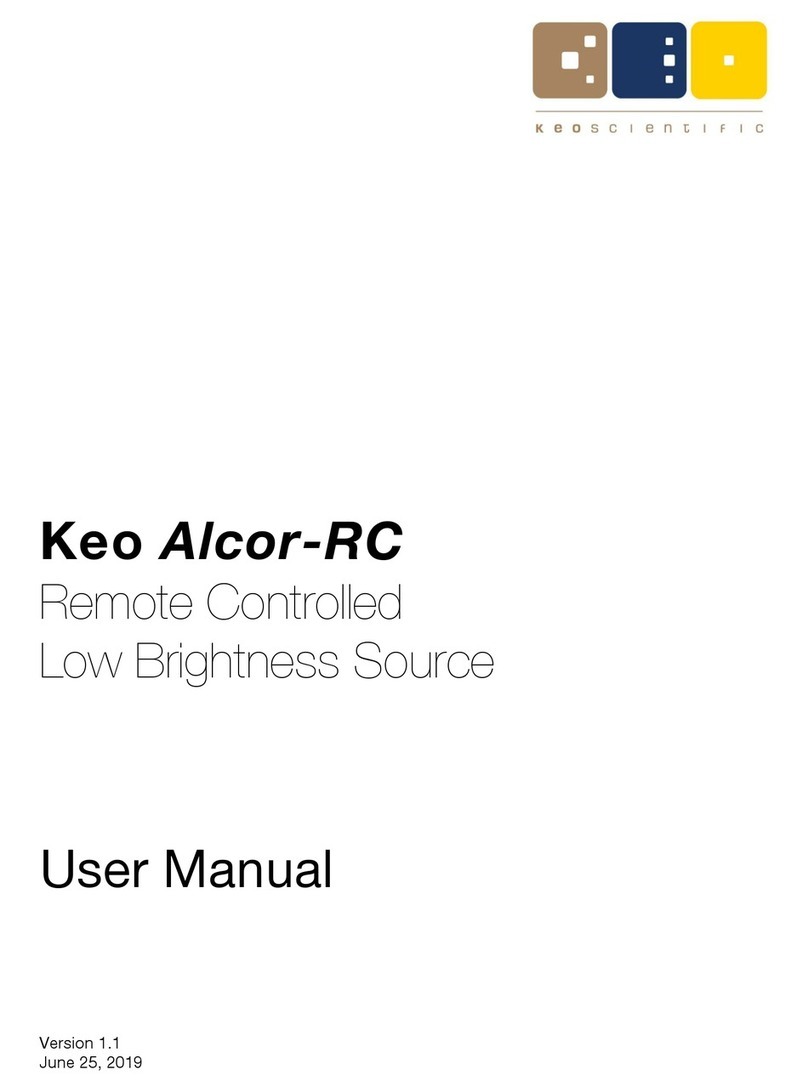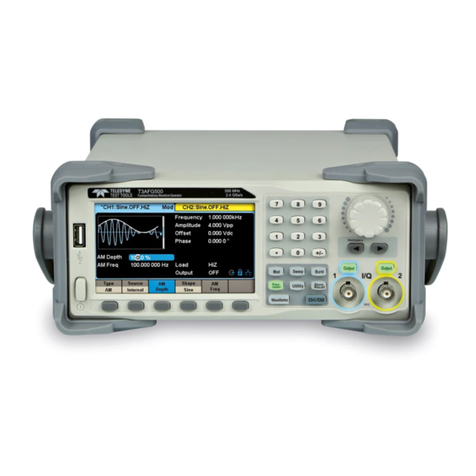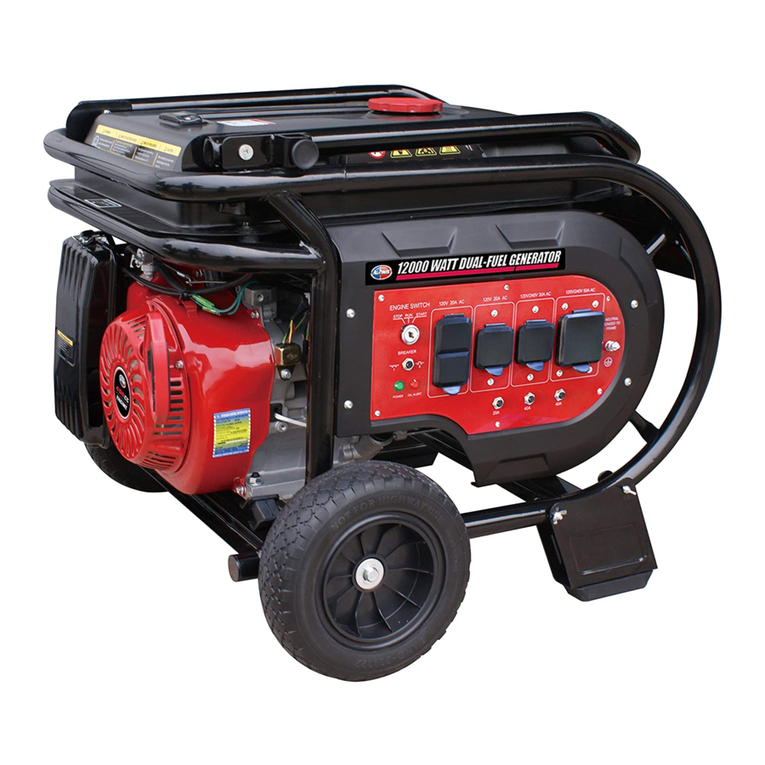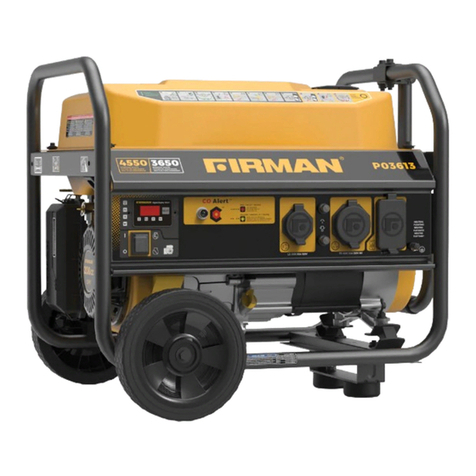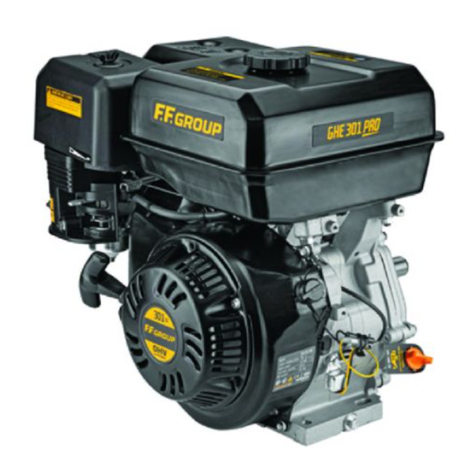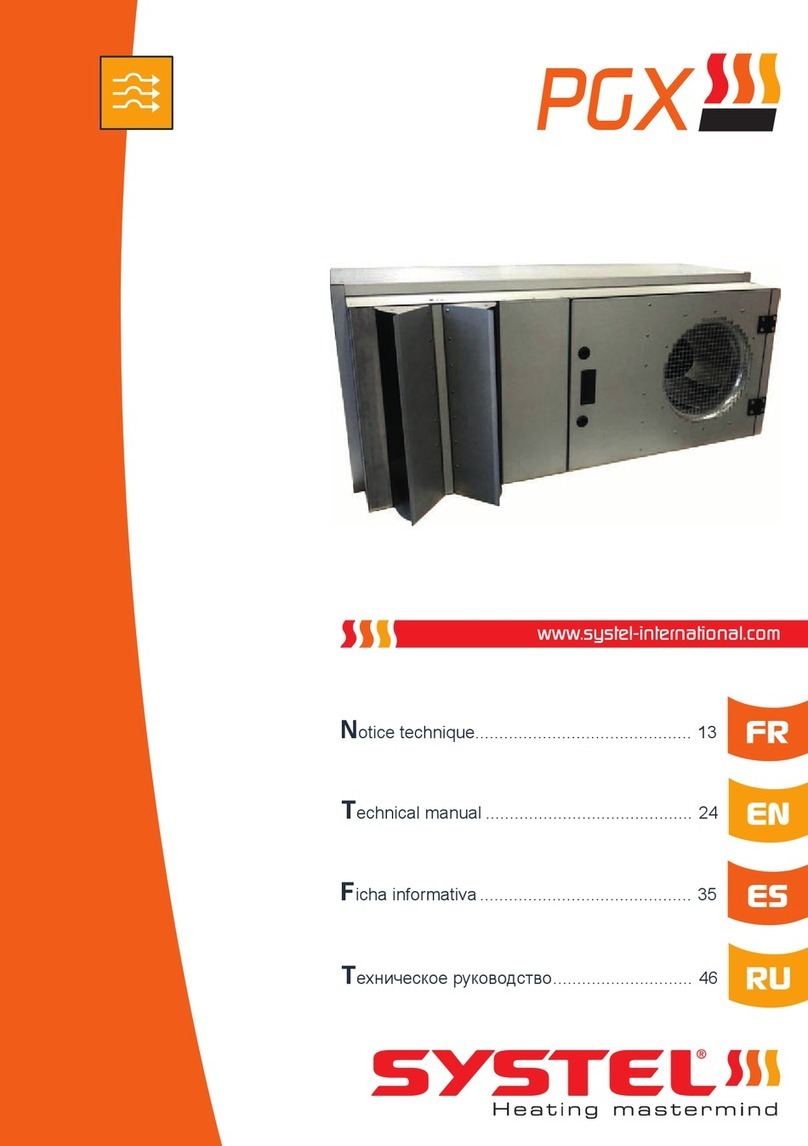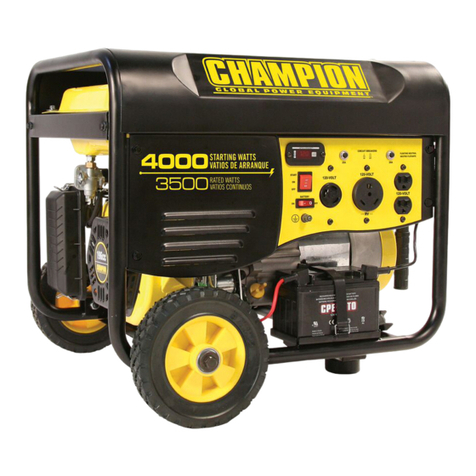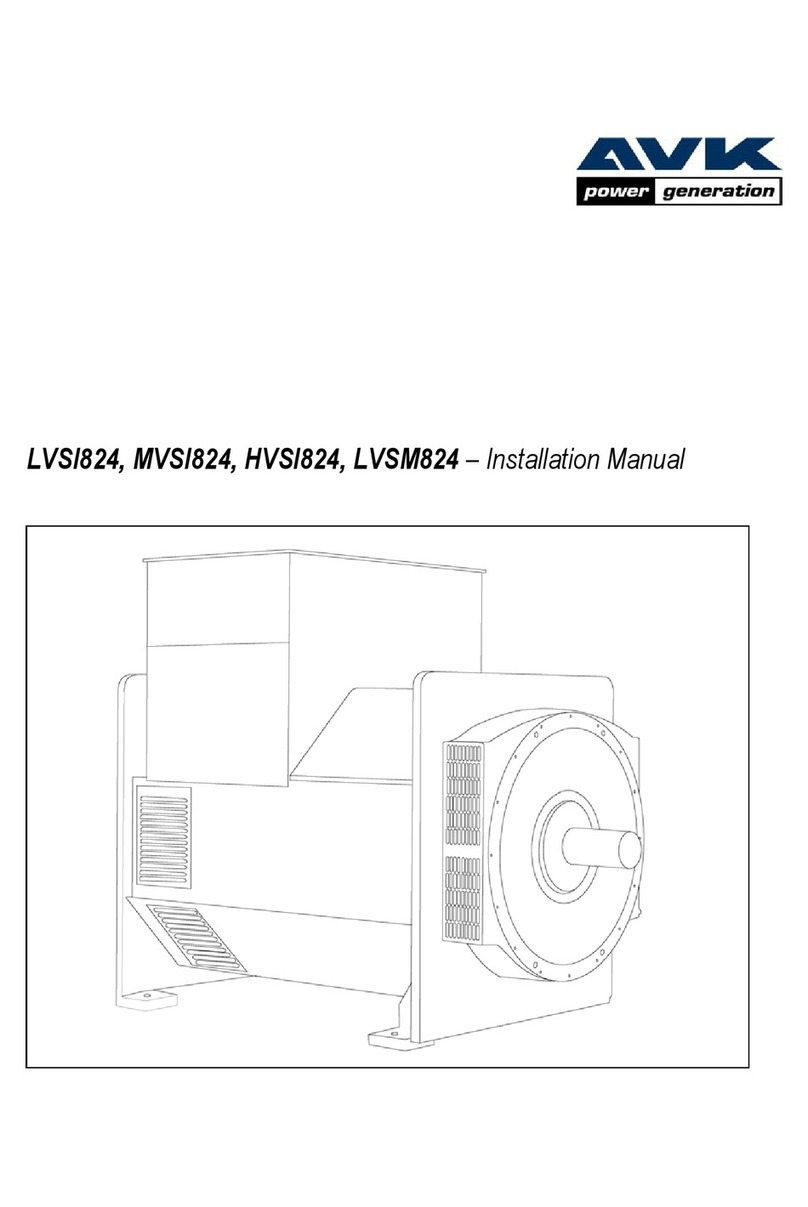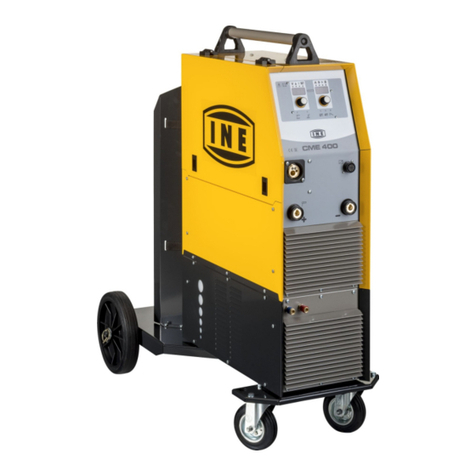Gendome Home3000 User manual





Home 3000
Portable Power Station User Manual

Please read this user manual carefully and use the product correctly. About all safety
tips, warning messages, terms of use, and disclaimers at:
https://www.gendome.com/pages/faq

CONTENTS
1.1 Basic Info
1.2 Output
1.3 Input
1.4 Battery Module
1.5 Temperature
1.6 Others
.......................................................................................................................................
...........................................................................................................................................
...............................................................................................................................................
...........................................................................................................................
...............................................................................................................................
...........................................................................................................................................
1
1
1
2
2
2
1. Specifications
2. Safety Instructions
1
3.1 Application
3.2 Dimensions
3.3 Display and Interfaces
3.3.1 Display
3.3.2 Description of Functions
3.3.3 Device Side Interfaces
3.3.4 Main Power Switch & DC Output Interfaces
3.3.5 AC Output Interfaces
3.3.6 Input Interfaces
3.4 Product Operation
3.4.1 Turn on, Shutdown, and LED Lighting
3.4.2 DC Output
3.4.3 AC Output
3.5 Charging
3.5.1 AC Charging
..................................................................................................................................
.................................................................................................................................
............................................................................................................
..................................................................................................................................
.................................................................................................
.....................................................................................................
..............................................................
.......................................................................................................
.................................................................................................................
....................................................................................................................
............................................................................
...........................................................................................................................
...........................................................................................................................
.....................................................................................................................................
.......................................................................................................................
4
5
6
6
7
9
10
11
12
13
13
14
15
16
16
3. Instructions for Beginners 4
3
2.1 Caution
2.2 Warning
2.3 FCC Compliance Statement
........................................................................................................................................ 3
.......................................................................................................................................
.................................................................................................
3
3

.....................................................................................................
.................................................................................................................
...................................................................................................................................
...............................................................................................................................
19
20
21
21
3.5.3 Wind Power Charging
3.5.4 External Battery
3.6 Use of APP
3.7 UPS Function
4. Equipment Inspection and Storage 22
4.1 Inspection before Acceptance
4.2 Equipment Storage
..............................................................................................
..................................................................................................................
22
22
5. Fault Indication and Troubleshooting 23
5.1 End-of-Life Equipment
5.2 Troubleshooting
.............................................................................................................
........................................................................................................................
23
23
6. Maintenance and Preservation 25
6.1 Maintenance
6.2 Preservation
...............................................................................................................................
...............................................................................................................................
25
25
3.5.2 Solar Power Charging .................................................................................................... 18
7. In-the-box 26

1.1 Basic Info
Weight
Dimensions (L*W*H)
Battery Capacity
Wi-Fi
Bluetooth
83.8lbs / 38kg
22.0*9.1*21.4 in / 560*230*543 mm
3072Wh
Support
Support
1
1. SPECIFICAITONS
1.3 Input
Max 3000W (Surge 6000W)
Max 18W, 5V 3A/9V 2A/12V 1.5A
Max 360W, 12V
Max 36W, 12V
Max 120W, 12V
Max 15W
1.2 Output
AC Output (×5)
USB-A (×4)
RV Output (×1)
DC5521 Output (×2)
Cigarette Lighter Output (×1)
Wireless Output (×2)
USB-C (×2) PD3.1, Max 140W, 5V 3A/9V 3A/12V 3A/
15V 3A/20V 5A/28V 5A
* Cigarette lighter, DC5521 and RV output ports share the power of maximum 360W.
* The maximum output power of the device is 3742W.
* Support AC and Solar charging simultaneously, up to 3000W input power.
Max 1800W, 120V
Max 1500W, 12~75V
Max 200W, 12~75V
Slow charging: 500W
Fast charging: 500~1800W adjustable
AC Input
Solar Power Input
Wind Power Input
Slow/Fast charging mode

1.4 Battery Module
External Battery Pack Supports up to 2 External Batteries
1.6 Others
2
Ambient Temp. for Discharging
Ambient Temp. for Charging
Optimal Operating Temp.
Ambient Temp. for Storage
32~113°F/0°C~45°C
32~113°F/0°C~45°C
68~86°F/20°C~30°C
32~113°F/0°C~45°C
1.5 Temperature
Nominal Voltage
Protection
51.2V
High temperature protection, low temperature protection,
over discharge protection, over charge protection,
overload protection, short circuit protection, over current
protection.
2500 cycles to 80+% capacity, max 6500 cycles
Cycle Life
EV-Grade LFP
Battery cell

2.1 Caution
2. SAFETY INSTRUCTIONS
a.
b.
c.
d.
e.
Risk of Electric Shock. Do not remove the cover. No user serviceable parts inside. Refer servic-
ing to qualified service personnel.
For continued protection against risk of fire, replace only with the same type and rating of
fuse. Refer replacement to qualified service personnel.
Risk of Electric Shock. Connect only to properly grounded outlets.
Risk of Injury to Persons. Do not use this product if the power cord or the battery cables are
damaged in any way.
This device is not intended for use in a commercial repair facility.
This device complies with part 15 of the FCC Rules.
Operation is subject to the following two conditions:
(1) This device may not cause harmful interference, and
(2) this device must accept any interference received, including interference that may cause
undesired operation.
This equipment has been tested and found to comply with the limits for a Class A digital
device, pursuant to part 15 of the FCC Rules. These limits are designed to provide reasonable
protection against harmful interference when the equipment is operated in a commercial
environment. This equipment generates, uses, and can radiate radio frequency energy and, if
not installed and used in accordance with the instruction manual, may cause harmful interfer-
ence to radio communications. Operation of this equipment in a residential area is likely to
cause harmful interference in which case the user will be required to correct the interference at
his own expense.
Warning: Changes or modifications to this unit not expressly approved by the part responsible
for compliance could void the user’s authority to operate the equipment.
FCC Radiation Exposure Statement
The device has been evaluated to meet general RF exposure requirement.
The device can be used in mobile(min20cm) exposure condition.
2.3 FCC Compliance Statement
2.2 Warning
a.
b.
c.
d.
e.
Do not overcharge the internal battery.
Do not smoke, strike a match, or cause a spark in the vicinity of the power pack.
Only charge the internal battery in a well ventilated area.
Risk of Electric Shock and Risk of Fire. This device is not preferred to be stored in a vehicle.
The device is prefered to be used indoors. For outdoor using, please avoid dust and water.
3

3.1 Application
Portable power stations are widely used for power supply to almost all electrical products
through interface conversion. In addition to charging through utility power input interface, equip-
ment charging through solar power charging interface and wind power charging interface are
also available. It is widely used for emergency communication, emergency rescue, outdoor
office, off-grid power, backup power during outage and mountainous areas without utility power.
4
3. INSTRUCTIONS FOR BEGINNERS
Emergency Power Supply Outdoor Office
Emergency CommunicationVehicle Emergency
Travel in RV Emergency Rescue
Camping Home Life

a. Length and Height
560mm
498mm
543mm
b. Left Side c. Right Side
15AMAX
15AMAX
ACON OFF
30A
MAX
30A125V~
GRDG
+-
OVERLOAD
PROTECTION
INPUT12-75V
BATTERY-1 BATTERY-2
ACINPUT
WIND200W
FAST
SLOW
ACCHARGE SPEED
+-
SOLAR1500W
230mm 230mm
IOTRESET
USB-A18W
USBFAST CHARGE
DC12V 120W
12V360W MAX
+-
USB-C140WUSB-C140W
DCON OFF
POWERON OFF
USB-A18W
3.2 Dimensions
5

6
3.3.1 Display
3.3 Display and Interfaces
1
3
4
5
6
7
12
11
10
9
8
2
w
INPUT OUTPUT
OUTPUT
w
Use Status
Remaining Time: -- h -- m
60
0
14
13
15
16

7
3.3.2 Description of Functions
Icon Display DescriptionName
-
2
It is dynamically displayed according to the
actual value of the power. It displays green
when the power is higher than 50%. it displays
yellow when the power is between 20% ~ 50%.
It displays red when the power is less than 20%.
Power Ring
1-Represents the specific power level, the
value ranges from 0% to 100%.
Battery Percentage
-
Represents the total input power when
charging the device with wall charger, solar
and wind power, in W (Watts). It will display
0W when it is not charging.
3Input Power
-
4
When charging, it shows the estimated
remaining charging time; when discharging,
it shows the estimated remaining discharg-
ing time; when charging and discharging, it
is calculated by the state of charging. "h"
represents hours, "m" represents minutes.
Remaining Time
9AC Output
Represents the output frequency of the
AC. When the AC switch is turned on, the
icon is always on. Quick press 3 times of
the AC switch in one second to change
the output frequency. Flashing red when
a fault occurs, and gray when not in use.
6
Represents a protection measure to take over
the work when power outage. The icon is gray
in normal conditions, lights on during protec-
tion, and flashes in red when a fault occurs.
UPS
When using the solar panel to charge the
device, the icon is always on. Flashing red
when a fault occurs, and gray when not in use.
7Solar Power Charging
8Wind Power Charging
When using the wind to charge the device, the
icon is always on. Flashing red when a fault
occurs, and gray when not in use.
5
When the left icon is displayed, the device is
in fast charging mode, and the input power
can be adjusted in the app.
When the right icon is displayed, the device
is in slow charging mode, and the input
power is limited to 500W.
Slow charging
Fast charging

8
Icon Display DescriptionName
Output Power
Represents the total output power of the
device when it is discharged, in W (Watts),
and displays 0W when there is no output.
-
DC Output Represents the ON/OFF state of the DC
switch, it is always on when DC switch is
turned on, and it is gray when turned off.
Wi-Fi
Represents the networking status of the
device. When the icon is on, it means
the networking is successful. Flashing
icon indicates that the networking is in
progress. The icon does not display
when it is not connected to the network.
External Battery Pack
Represents the external battery pack of
the device. The icon is always on when
external battery pack connected, and the
icon is gray when not connected.
13
12
Temperature
Steady light on means the temperature is
normal, flashing orange means high tempera-
ture, and flashing blue means low temperature.
16
14
11
10
Cooling Fan
Represents the operation of the cooling
fan. The icon is always on when cooling fan
is running, and the icon is gray when not
running. Flashing red when a fault occurs.
15
Buzzer
Steady light means the buzzer is turned
on, gray means the buzzer is turned off.
Only the APP can turn on/off buzzer switch.
If an alarm/failure has occurred, there will
be beep sounds, a pop-up window and
an exclamation mark on the top right of
the icon.
Alarm/failure content shows on the
pop-up window. Beep sound will last 10
seconds, and also can be turned off by
pressing the power button.
3.3.2 Description of Functions

9
3.3.3 Device Side Interfaces
a. Interfaces on the left b. Interfaces on the right
15A MAX
15A MAX
AC ON OFF
30A
MAX
30A 125V~
GRDG
+-
OVERLOAD
PROTECTION
INPUT 12-75V
BATTERY-1 BATTERY-2
AC INPUT
WIND 200W
FAST
SLOW
AC CHARGE SPEED
+-
SOLAR 1500W
IOT RESET
USB-A 18W
USB FAST CHARGE
DC 12V 120W
12V 360W MAX
+-
USB-C 140WUSB-C 140W
DC ON OFF
POWER ON OFF
USB-A 18W

10
3.3.4 Main Power Switch & DC Output Interfaces
8
7
6
5
4
1
2
3
IOT RESET
USB-C 140W
USB-A 18W
USB FAST CHARGE
DC 12V 120W
12V 360W MAX
+-
USB-C 140W
DC ON OFF
POWER ON OFF
USB-A 18W
Main Power Switch
USB-C Output
USB-A Output
RV Output
DC Output
Cigarette Lighter Output
DC Output Switch
IOT Switch
Hold the switch for 3 seconds to turn on/off
the equipment. Press once to close pop-ups
and turn off sounds for alarms.
Two independent USB-C output ports, each
with an output power of 140W.
Four independent USB-A output ports, each
with an output power of 18W.
It provides 12V constant voltage output of up
to 360W.
1
2
3
4
5
6
7
8
Two DC output ports for 12V constant voltage
output of up to 36W, which is shared with the
cigarette lighter.
It provides 12V output that can be connected
to a converter plug for charging electrical
appliances.
Short press the button to turn on or turn off
DC output. Hold the button for 3 seconds to
turn on or turn off the screen.
Hold the button for 3 seconds to turn on the
Wi-Fi module for network configuration.

11
The maximum output current of all AC output ports shall not exceed
30 A. Once the limit is exceeded, the automatic protection mecha-
nism will be triggered and the equipment will stop working.
Note
AC Output Switch
15A AC Ports
30A AC Port
Short press the button to turn on/off AC output,
including four 15A outlet and one 30A outlet.
It provides an output of up to 30A for electrical
appliances.
Each of the 4 sockets provides an output of up to
15A for electrical appliances.
1
2
3
3.3.5 AC Output Interfaces
3
1
2
15A MAX
15A MAX
AC ON OFF
30A
MAX
30A 125V~
GRDG

12
AC Overload Protector
Wind Power Charging
Port
When the AC input current exceeds 50A, it will
disconnect automatically. It must be reset manually.
Solar Power Charging Port It can be connected to solar power charging, pro-
viding a voltage of 12~75V and a charging power of
up to 1500W.
Battery Pack Parallel
Operation Port
It can be connected to a battery pack manufac-
tured by Gendome to increase the equipment
capacity.
It can be connected to wind power charging, pro-
viding a voltage of 12~75V and a charging power of
up to 200W.
Charging Speed Switch
Adjust the charging power of the device. The power
of slow charging is constant at 500W. The power of
fast charging is adjustable by APP from 500W to
1800W at 120V.
AC Charging Port It is connected to utility power supply for equipment
charging.
3.3.6 Input Interfaces
+-
OVERLOAD
PROTECTION
INPUT 12-75V
BATTERY-1 BATTERY-2
AC INPUT
WIND 200W
FAST
SLOW
AC CHARGE SPEED
+-
SOLAR 1500W
Table of contents
Popular Portable Generator manuals by other brands

Teledyne
Teledyne T3AFG5 Series quick start guide
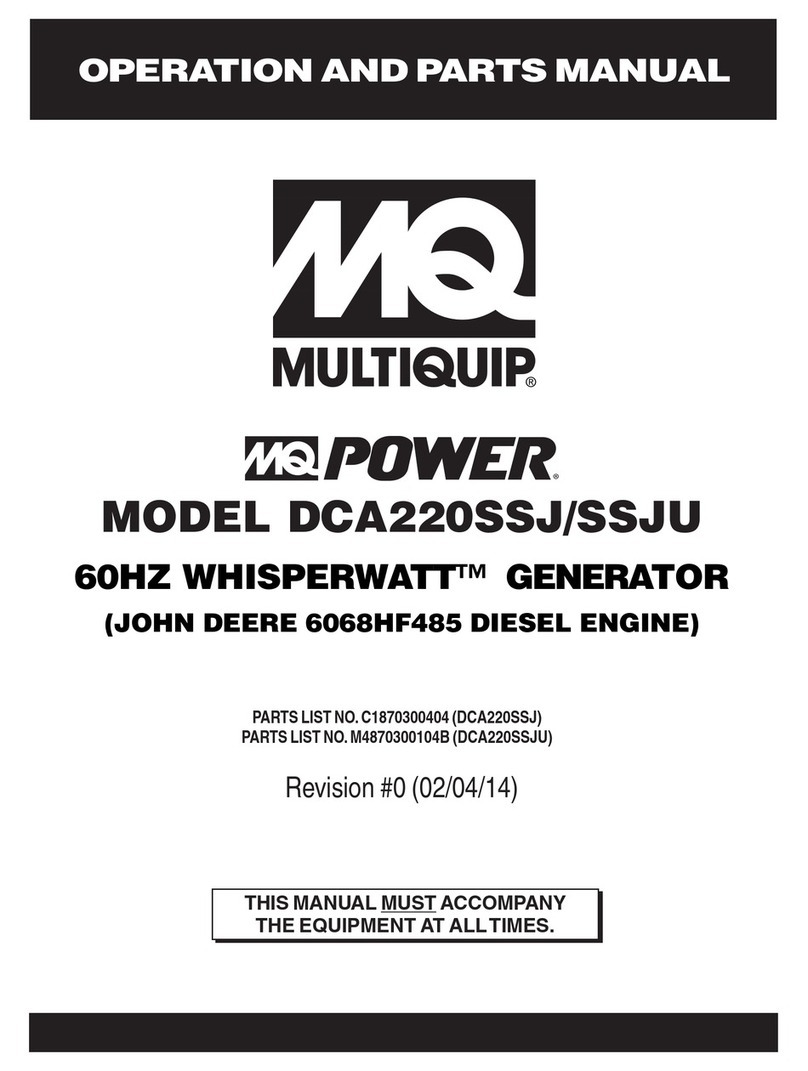
MULTIQUIP
MULTIQUIP Power WHISPERWATT DCA-220SSJ Operation and parts manual

Atlas Copco
Atlas Copco QAS 500 instruction manual

Bowens
Bowens QUAD 2400 BW-7620 manual
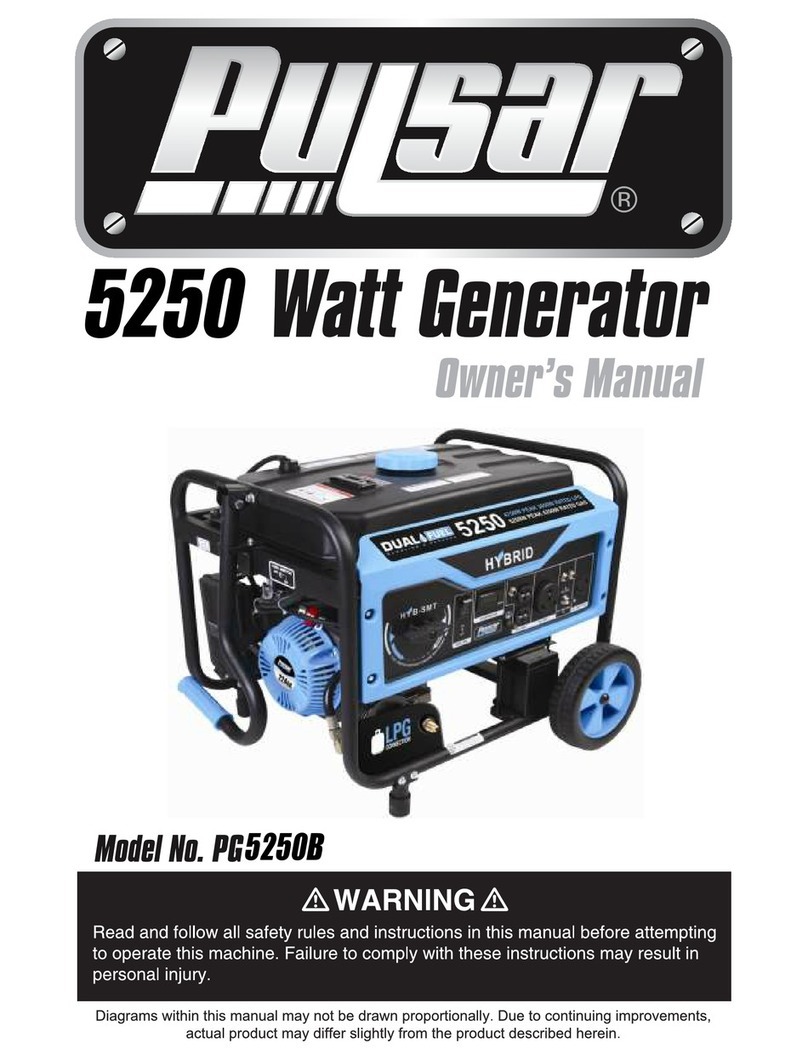
Pulsar
Pulsar 5250B owner's manual
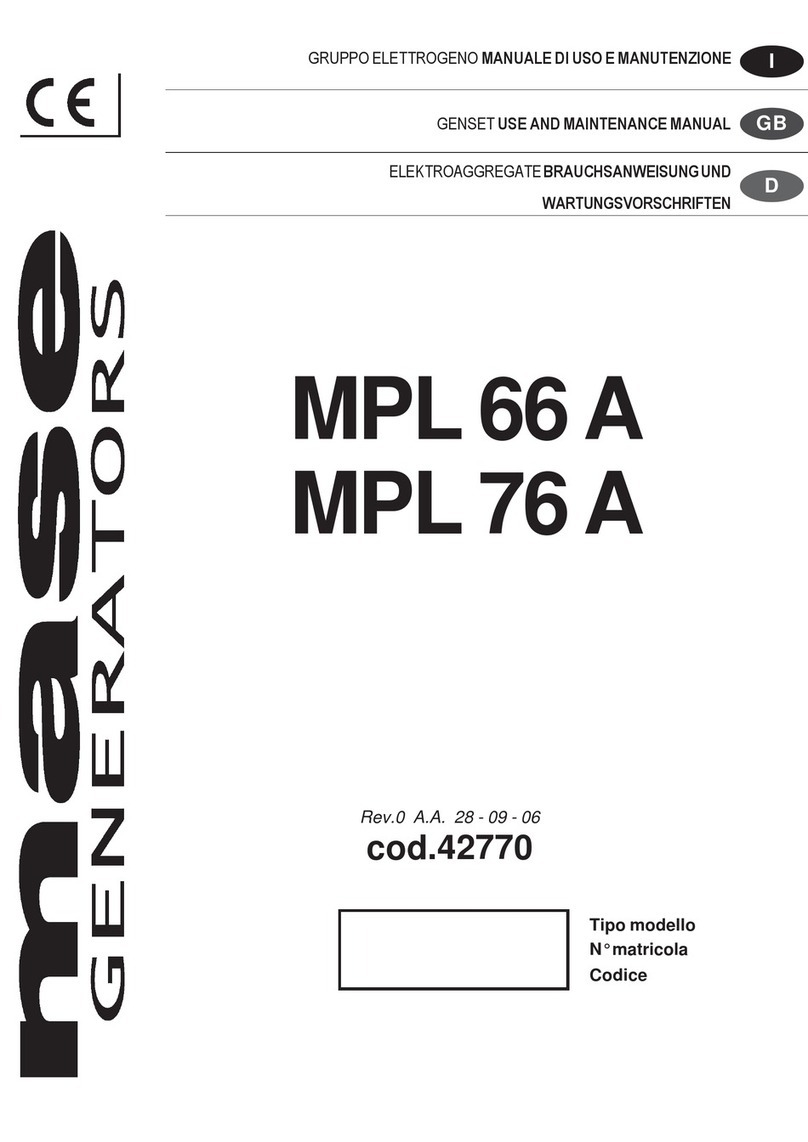
Mase Generators
Mase Generators MPL 66 A Use and maintenance manual
